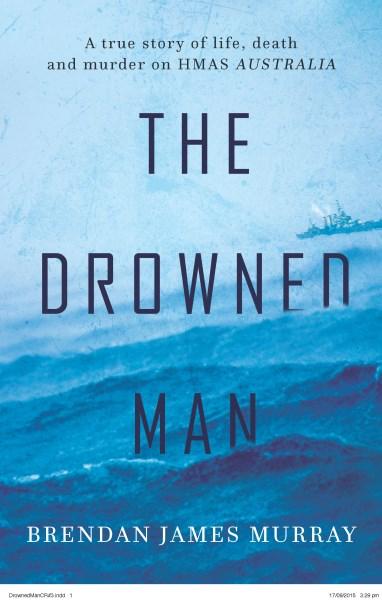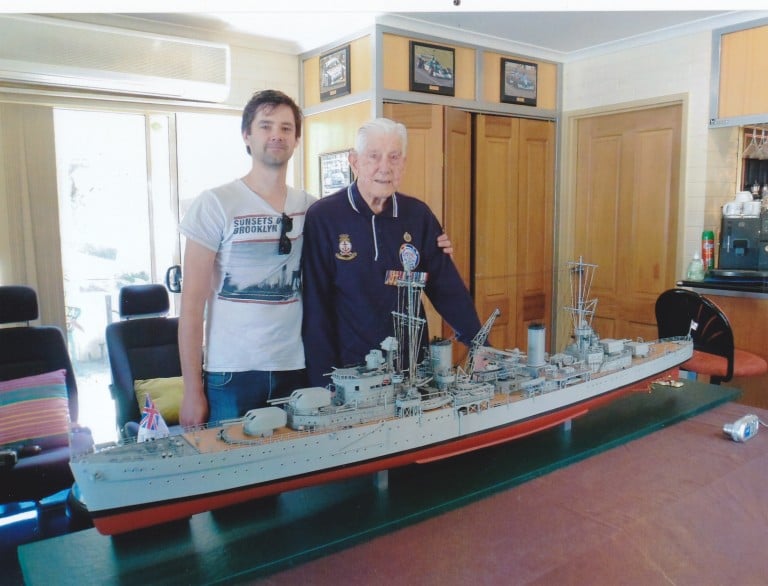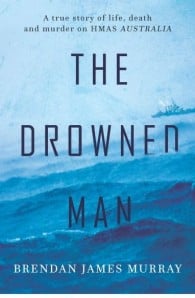 Following a chance encounter with a navy veteran in a fish-‘n’-chip shop , writer and history teacher Brendan James Murray embarked on a quest to uncover the truth about a shocking murder on an Australian warship. The result is this intriguing and compelling book, The Drowned Man. We talked to Brendan James Murray about the encounter that sparked the book and the problem of continued homophobia in Australian society.
Following a chance encounter with a navy veteran in a fish-‘n’-chip shop , writer and history teacher Brendan James Murray embarked on a quest to uncover the truth about a shocking murder on an Australian warship. The result is this intriguing and compelling book, The Drowned Man. We talked to Brendan James Murray about the encounter that sparked the book and the problem of continued homophobia in Australian society.
Better Reading: A chance encounter led you to write this intriguing book, The Drowned Man, about a mysterious death on HMAS Australia during World War 2. What was it about this particular story that set you on this path?
Brendan James Murray: My decision to write The Drowned Man was influenced by a number of factors; quite a few stars aligned, in fact. Certainly, the rumour I heard about the murder of a gay man during the Second World War was the catalyst. My chance encounter with a veteran was important, but the most significant conversations were with my own grandfather, Richard Radcliffe [pictured below left, with the author]. He had served in the navy for many years, and his knowledge of this alleged incident was both intriguing and troubling. As a boy I had always idolised him, and hearing these stories forced me to reassess my perceptions of him. He did not share my outrage at this rumour.
On another note, growing up with my grandfather’s stories led me to a fascination with our naval history. I have always wanted to write about the wonders and horrors of life at sea during a time of war.
BR: To piece together a murder mystery about events that happened so long ago must have been difficult and time-consuming. How did you go about it and how long did it take?
BJM: In total – research time plus writing time – this book took around two years to complete. If I had wanted to, I could have turned it into an even longer endeavour. There were always more ‘leads’ I could have followed, more stories I could have investigated and expanded upon, more people I could have tried to track down. Ultimately, it reached a point where I had to say that enough was enough, and that I had taken the story as far as I was able. This was a ship on which thousands of men served during the war. Essentially, that means thousands of possible stories.
My approach was to read everything I could about the Australia (published and unpublished materials as well as historical documents) and speak with as many people as I could, in as much detail as I could. There were challenges with the latter part of my research, obviously. People die and memories fade. The war ended over seventy years ago, after all.
BR: How much did you rely on the testimony of the survivors you managed to track down to uncover the truth of what happened on board HMAS Australia and how much was based on records?
BJM: The records formed the skeleton of the story, while the interviews I conducted became the flesh and personality of The Drowned Man. In that sense, the narrative is based far more on my conversations than it is on documentary evidence.
One of the difficulties associated with writing what could be described (at least in part) as a ‘gay history’ is that those things were very much hidden. Sodomy was a crime, and when it was discovered, naval authorities went to great lengths to cover it up. The classic example was the stabbing murder of John Riley on the Australia in 1942. It was widely known that the motive was either a homosexual love triangle or an attempt to blackmail homosexuals. However, the captain and others made sure that was never mentioned in the court martial. What this all meant was that I relied a great deal on men I interviewed, both on and off the record. This is problematic in a number of ways, but I engage with these challenges openly within the text and – for me at least – this adds to the sense of intrigue surrounding those ‘long-ago’ events.
 You say that you had previously viewed Australia’s naval past as ‘unapologetically through the hero lens…’ and that, ‘when people criticised the Australian flag, I would openly baulk.’ Has that changed since you wrote The Drowned Man?
You say that you had previously viewed Australia’s naval past as ‘unapologetically through the hero lens…’ and that, ‘when people criticised the Australian flag, I would openly baulk.’ Has that changed since you wrote The Drowned Man?
BJM: That is an interesting and challenging question. I would say that my view of our naval past is now far more realistic, and that I am now far more aware of the minorities who don’t tend to get much of a mention in mainstream history. The 1940s were certainly a time of bigotry and prejudice.
That said, I wouldn’t say that I have become entirely disillusioned. There were good men on the ship, and heroes, as much of a cliché as that has become. I hope I have done those men justice in The Drowned Man.
BR: Before your chance encounter, you were unaware of the levels of homophobia in the Australian Navy and how much silence there was surrounding it. Were you shocked by your findings?
BJM: I was surprised, though shocked may be too strong a word. Certainly, many of the things I write about in this book are shocking, though I wasn’t totally naïve to the existence of homophobia in our past. What did shock me, and continues to shock me, is the degree to which homophobia (and violence against homosexuals) continues today. I look at some contemporary cases in The Drowned Man, and they’re frightening… Readers of the book will also hear the story of a currently serving gay sailor I spoke with during my research. That story is a particularly unusual one, and it left me wondering about the kind of discrimination that may go on behind closed doors in the RAN today.
BR: How much has changed since those days for the armed forces generally?
BJM: I like to think that a great deal has changed. Organisations like DEFGLIS (a defence force LGBTI support and information service) give people somewhere to turn. However, I feel that the navy, army and air force still have a long way to go, as does the rest of Australian society. Allowing gay marriage will be a turning point, in my view. People talk about the importance of marriage, but for me that’s almost the least important part of the issue. It’s about ending state sanctioned discrimination. How can we be surprised that homophobia (and homophobic violence) exists in a nation where our leaders are essentially marking gay people as ‘abnormal’ by barring them from a right many of us take for granted?
BR: Do you think stories like this one and uncovering the truth, even many years later, are critical to help us develop as a nation and a more tolerant community?
I think it’s vital to tell stories that deviate from the mainstream and examine the experiences of minority groups. This (one hopes) will lead to empathy, and empathy can only develop a nation. The idea of “uncovering the truth” is a problematic one, as I discuss in the book, but what’s more important is the question: Could something like this happen? Most will answer with a resounding yes. The more important question then becomes: Why?
BR: There are many sad stories in The Drowned Man, and not only those of the specific victims who play central roles in the story, but those of the many lost seamen in World War 2. How difficult was it for you personally in talking about these stories?
 BJM: There are certainly some extremely sad stories in The Drowned Man. And you’re right – this book is not just about the experience of homosexuals. This is a story of violence, and that violence takes many forms.
BJM: There are certainly some extremely sad stories in The Drowned Man. And you’re right – this book is not just about the experience of homosexuals. This is a story of violence, and that violence takes many forms.
For me, writing the book was an emotional journey. I grew close to all the men I interviewed. Some I now consider close friends. Watching these old sailors still struggling with the tortures of post-traumatic stress disorder all these years later was difficult. Perhaps the most emotionally challenging part of my research was interviewing a woman well into her nineties whose brother had been killed on the Australia. She was exceptionally frail, her voice little more than a whisper, but her love for her lost brother was still palpable after all this time. I patched that man’s story together through many conversations with many people.
There were a few tears, but I’m proud to be able to share that story with others.
***
To purchase a copy of The Drowned Man or find out more, click here




A very well put together interview. Can’t wait to read it!
I attended a review of this book by the author recently and devoured the gripping tale in two days- I encourage more young authors to dig deep and expose the truth wherever and whenever possible- enough of lies and cover-ups which leave us all traumatised.
who was the lookout i think tabe was his surname